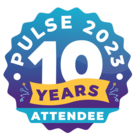I hope you have liked the previous post on PX Best practices. If you haven’t gone through it yet, please find the link above to get started with this series.
While configuring an engagement on PX, the first thing that we all concentrate on is “who should receive this communication and where ( on the product )” - “Audience rules” is what we name it. These rules are the base for any campaign success because relevancy, timing, frequency, and location are essential parameters of any campaign creation.
So, what rules should we use?
What is the right way to create audience logic?
What is worth demanding the user’s attention?
How much attention should we draw to different kinds of engagements?
The goal is to make engagements a seamless part of the product experience - without being disruptive.
(Ideal) Pages to exclude from engagements
-
Login page
-
Dashboard page with below exceptions:
-
If something is triggered explicitly from the dashboard page
-
Product announcements
-
User Attributes to exclude from engagements.
Mass communication doesn’t work anymore. We need to personalise user communications for specific users .For that we need exclude/include the audience using user profile attributes like region, role, title, etc. These precisely targeted communications improve customer experience by not bombarding the users with unnecessary messaging.
Historical feature usage rules:
Nudging or user engagement makes more sense after defining the PX user proficiency level based on the usage data. So historical feature usage sets the base for this discussion.For example , We roll out the follow-up engagement only if the user uses a particular feature for N number of times.
This not only helps us to share best practices as per the usage but also helps users achieve the maturity to view the follow-up engagements unlocking the product proficiency levels.
Interval Scope :
While configuring the engagement, the scheduling step has interval scope settings to ensure that your users do not view a specific engagement too frequently, which could be annoying otherwise.
Leverage Throttling:
The engagement Throttling Setting controls helps you configure the following:
-
To maintain a minimum time gap between the qualifying engagements for a user.
-
To limit the maximum number of qualifying engagements that a user can view in a particular hour, minutes, or day.
Imagine throttling is like setting the cap for “How many messages should reach your users in a span of X days.”
Ignore throttling for onboarding cohort:
Onboarding is the primary goal for most of the customers and focuses on driving users towards the aha moment at the earliest. Hence enabling throttling for user onboarding cohort is not suggested in general.
That’s all for today folks, see you again next week with a new set of best practices!
Until then …..
Happy PX-ing!😎

